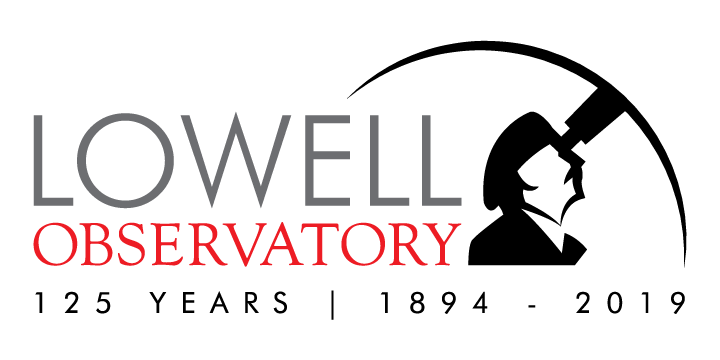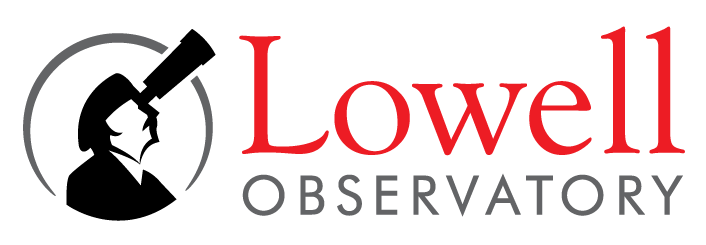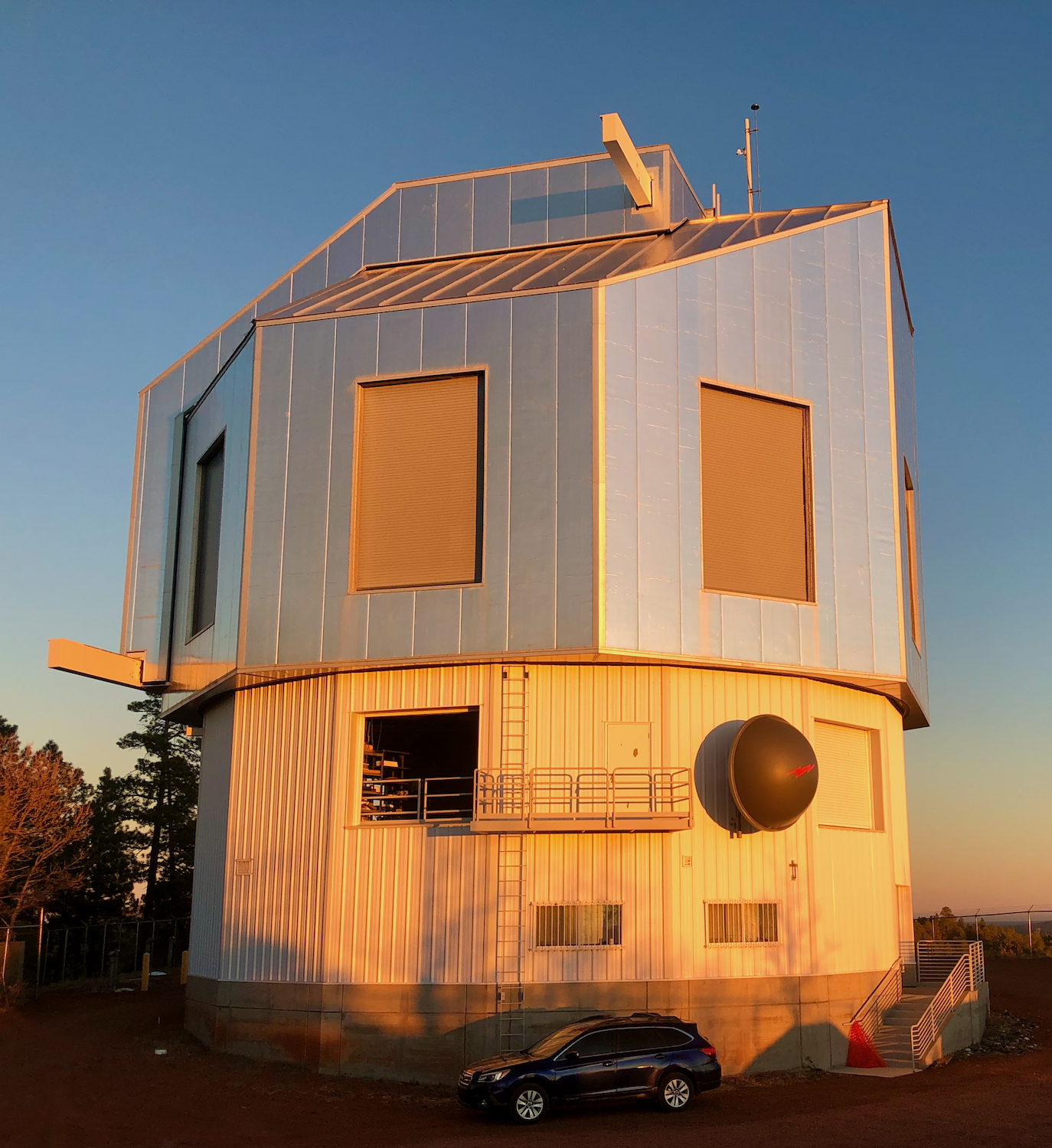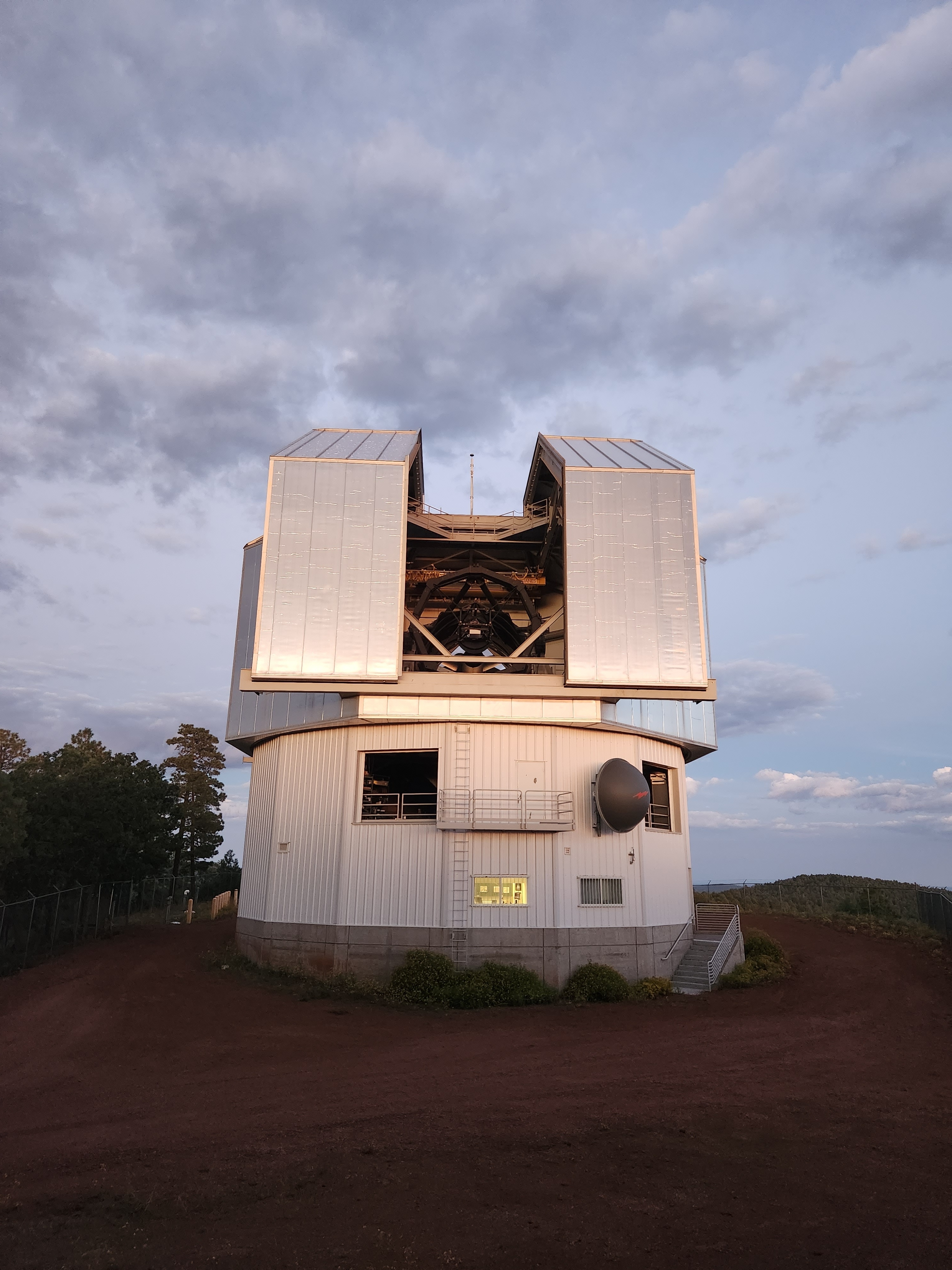Versions Compared
Key
- This line was added.
- This line was removed.
- Formatting was changed.
| Excerpt Include | ||||||
|---|---|---|---|---|---|---|
|
| Livesearch | ||||
|---|---|---|---|---|
|
Lowell Discovery Telescope
(formerly the Discovery Channel Telescope)
Observer Information Pages
(The information on these pages supersedes DCTIC: Observing at DCT)
| Warning | ||
|---|---|---|
| ||
| ||
For the duration of the COVID-19 outbreak, all observing at the LDT will be done remotely. See Continuing in 2024A, limited in-person observing will be supported at LDT. For those observing remotely, see LDT Remote Observing Notes. |
Monthly Observer and Telescope Operator Calendar
| Float | ||
|---|---|---|
| ||
Image: TJ. Ellsworth-Bowers Fernandez (Lowell) |
|
The 4.3-m Lowell Discovery Telescope (LDT) is Lowell Observatory's flagship facility at a dark-sky site approximately 40 miles southeast of Flagstaff on the Coconino National Forest.Lowell Observatory operates the LDT in partnership with Boston University, University of Maryland, Northern Arizona University, University of Toledo, and Yale University. The telescope is classically scheduled by semester, with the current being 2021A.The 2024A. See the current call for observing proposals is available for Lowell Observatory and Partner Institution members: 2021A LDT Call for Proposals
Instrumentation Quick Links:
Facility Instruments:
LMI (Optical Imager)
DeVeny (Optical Spectrograph)
NIHTS (Near-infrared Spectrograph)
Visitor / PI Instruments:
EXPRES (Optical Spectrograph)
QWSSI (Optical Speckle Imager)
.
The facility was constructed as the Discovery Channel Telescope, and was renamed in 2019 in cooperation with Discovery Communications.RIMAS (Near-infrared Spectrograph / Imager – Under Development, Coming 2021)
| Background Color | ||||||||||||||||||||||||||||||
|---|---|---|---|---|---|---|---|---|---|---|---|---|---|---|---|---|---|---|---|---|---|---|---|---|---|---|---|---|---|---|
| ||||||||||||||||||||||||||||||
Updates (and Old Updates)UPDATE: The LMI User Manual has been updatedCheck with staff about the upcoming PypeIt Workshop on June 11. (2024Apr24) UPDATE: The 2024B LDT Call for Proposals has been released. (2020Dec202024Apr11) UPDATE: The 2021A 2024A LDT schedule Schedule has been released. (2020Dec012023Dec08) UPDATE: The DeVeny spectrograph is back in operation. (2020Nov06) UPDATE: NIHTS is again available for use. (2020Oct08) UPDATE: The GG495 blocking filter has been replaced in the DeVeny spectrograph. (2020Oct02)new VPN platform is now required for connection to the Lowell network. All remote observers MUST update their VPN settings: Watchguard SSLVPN Installation. (2021Sep06)
|



